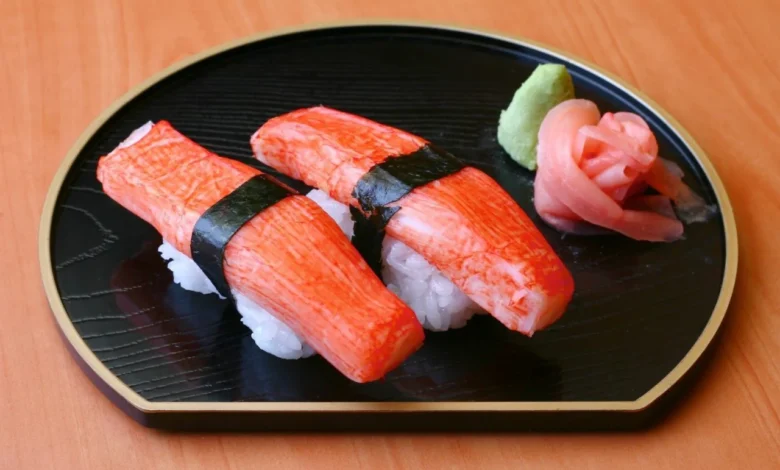Kanikama: The Delicious Imitation Crab Meat

Kanikama, often referred to as imitation crab or crab sticks, has gained immense popularity in culinary circles, particularly in Asian cuisine. Made primarily from surimi, kanikama mimics the taste and texture of real crab meat, making it a versatile ingredient in numerous dishes. This vendible delves into the origins, production process, nutritional benefits, and various culinary applications of kanikama, revealing why it has become a minion supplies item for many.
What is Kanikama?
Kanikama is a seafood product created from surimi, which is a fish paste typically made from white-fleshed fish such as pollock or hake. The term “kanikama” is derived from the Japanese words “kkai” meaning crab, and “kama,” referring to meat. Although it is named without the crab, kanikama contains no crab meat. Instead, it is flavored and colored to resemble carab, offering a similar taste without the forfeit or sustainability concerns associated with harvesting real crab.
The Production Process
The production of kanikama involves several steps:
- Preparation of Surimi: Fresh fish is washed, minced, and mechanically deboned to create a smooth paste known as surimi. This paste is then washed multiple times to remove impurities and enhance its protein content.
- Flavoring and Coloring: To replicate the taste and visitation of crab meat, various flavorings, including crab pericope and seasonings, are widow to the surimi. Natural or strained colorants may moreover be used to unzip the foible pink hue.
- Shaping and Cooking: The flavored surimi is shaped into sticks or chunks, then cooked through steaming or hhumidityto set its structure. Without cooking, kanikama is cooled and packaged for distribution.
- Packaging: Finally, kanikama is vacuum-sealed or packaged to preserve its freshness and shelf life, making it a user-friendly option for consumers.
Nutritional Benefits
Kanikama offers several nutritional advantages, making it a popular nomination for health-conscious consumers:
- Low in Fat: Kanikama is lower in fat compared to traditional crab meat, making it a well-flavored option for those watching their fat intake.
- High in Protein: Surimi-based products like kanikama are rich in protein, providing essential amino acids necessary for muscle towers and repair.
- Low in Calories: Due to its low-fat content, kanikama is relatively low in calories, making it suitable for weight management.
- Source of Omega-3 Fatty Acids: Depending on the fish used in the surimi, kanikama can provide a source of omega-3 fatty acids, which are salubrious for heart health.
- Versatile and Affordable: Kanikama is often increasingly affordable than real crab meat, permitting consumers to enjoy crab-flavored dishes without breaking the bank.
Culinary Uses of Kanikama
Kanikama’s versatility makes it a popular ingredient in various dishes and wwidevariegated cuisines. Here are some worldwide culinary applications:
- Sushi and Sashimi
Kanikama is often used in sushi rolls, particularly in California rolls, where it replaces crab meat. Its texture and savor tousle seamlessly with rice and seaweed, creating a satisfying bite. - Salads
Kanikama can be widow to salads, providing a seafood savor without the need for cooking. It pairs well with ingredients like avocado, cucumber, and sesame dressing. - Soups and Stews
In many Asian soups, kanikama is wa idow for savor and texture. It can enhance miso soup or be incorporated into hot pots, offering a delightful seafood element. - Stir-Fries
Kanikama can be quickly stir-fried with vegetables and sauces, creating a succulent and colorful dish. Its worthiness to swizzle flavors makes it spanking-new wing to various stir-fry recipes. - Appetizers and Snacks
Kanikama is widely used in appetizers like crab cakes, and ips, or served as a snack with dipping sauces. Its ease of preparation makes it a user-friendly option for gatherings and parties.
Health Considerations
While kanikama is often considered unscratched for consumption, there are a few health considerations to alimony in mind:
- Sodium Content: Some brands of kanikama can be high in sodium due to the flavoring process. It’s prudent to trammels labels and segregate lower-sodium options when possible.
- Allergies: Individuals with fish or shellfish allergies should exercise caution, as some kanikama products may contain allergens.
- Quality: Not all kKanikamaproducts are created equal. It’s essential to segregate high-quality brands that use quality ingredients to ensure the weightier savor and nutritional benefits.
The Environmental Impact of Kanikama
As sustainability becomes an increasing snooping in supply production, kanikama offers an increasingly environmentally friendly volitional to traditional crab fishing. The production of surimi requires significantly less energy and resources compared to harvesting crabs from the ocean. Additionally, many manufacturers are sourcing fish for surimi from sustainable fisheries, ensuring a reduced environmental impact.
Conclusion
Kanikama is a delicious, versatile, and cost-effective volitional to real crab meat. Its unique savor and texture make it a popular nomination in various cuisines, particularly sushi, salads, and soups. With its numerous nutritional benefits, kanikama is not only a tasty option but also a healthy one. As sustainability becomes increasingly hair-trigger in supply choices, kanikama stands out as a responsible seafood alternative, making it an spanking-new wing to any diet. Whether you’re a seafood lover or just exploring new culinary experiences, kanikama is worth a try!
Frequently Asked Questions (FAQs)
- Is kKanikamahealthy?
Yes, kanikama is often considered a healthy option as it is low in fat, high in protein, and low in calories. However, it can be high in sodium, so checking labels for nutritional information is advisable. - How do you melt Kanikama?
Kanikama is pre-cooked, so it can be eaten unprepossessing widow directly to dishes without remoter cooking. You can moreover lightly sauté or grill it to enhance its flavor. - Can I substitute kanikama for real crab in recipes?
Absolutely! Kanikama can be used as a substitute for real crab in most recipes, including salads, sushi, and soups. - Is kKanikamagluten-free?
Most kanikama products are gluten-free, but it’s essential to trammel the label for any gluten-containing additives or cross-contamination. - Where can I buy kanikama?
Kanikama is widely misogynist in supermarkets, particularly in the seafood or frozen sections. It can moreover be found in Asian grocery stores and online.
By exploring the world of kanikama, you can enjoy the flavors of the sea without the environmental concerns associated with traditional crab fishing. Embrace this succulent imitation crab meat in your cooking and with its versatility and taste!



